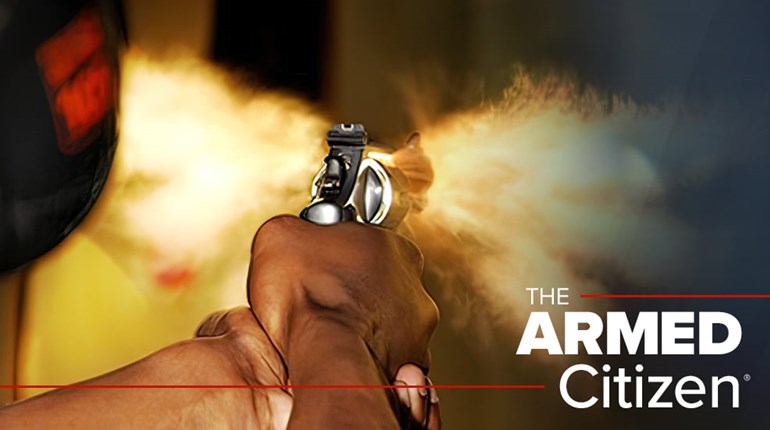
Photo courtest of NSSF
They aren’t just coming for your AR-15s and AK-47s, to paraphrase Beto O’Rourke. They are preparing to try and stop all semi-automatic manufacturing.
After the terrible attack at a country music festival in Las Vegas, some relatives naturally went looking for someone to blame; the murderer, after all, had killed himself. So, in July 2019, a few bereaved relatives sued a long list of gun makers.
This type of lawsuit should be a non-starter. Just as auto manufactures aren’t responsible for driver’s who misuse vehicles and Louiville Slugger isn’t liable for those who commit crimes with baseball bats, so too, law-abiding firearms manufacturers shouldn’t be responsible for the actions of criminals.
Because firearms are often subject to their own especially restrictive set of legal rules, Congress passed the Protection of Lawful Commerce in Arms Act (PLCAA) in 2005 to protect manufacturers from legal liability for the criminal misuse of their products. Thus, Colt’s Manufacturing Company and the various other targets of the suit filed for dismissal of the case.
When the defendant seeks to have a suit dismissed, the rules of federal court require a judge to accept the truth of plaintiff’s claims as if it is plausible. The idea is that at trial (and many thousands of billable lawyer-hours later) the truth or falsity of these “facts” can be determined.
The judge then refused to dismiss the case based on the following “facts” claimed by the plaintiffs: The AR-15 rifle, they claim, was designed as a military weapon called the M-16 and first saw use in the Vietnam War. The M-16’s “selective fire” feature enabled soldiers to choose between fully automatic, semi-automatic and three-round burst firing. As the Vietnam War wound down, AR-15 manufacturers turned to the civilian market. Rather than design a new weapon, the manufacturers removed the selector switch from the AR-15. Redesign was cost-prohibitive, while removal of the selector switch was cost-effective.
All of this, of course, is misinformation. The M-16 was, indeed, derived from the AR-15, which was originally a full-auto weapon, but the Colt AR-15 Sporter, and its many copies and derivatives, are not full auto. The Colt AR-15 Sporter introduced in 1963 was not the same as the full-auto AR-15 that was developed in the 1950s. Quoting from American Rifleman’s 1963 article announcing its availability: “Design of this sporter is such that parts required for fully-automatic fire cannot be installed” and so ATF considered it a firearm, not a machine gun. Colt did not just replace the selector switch.
Here is a link to a very informative video that shows the differences between the semi-automatic fire-control system and a full-automatic fire-control system. The AR-15 Sporter is fundamentally different. The full-auto parts will not work in a semi-automatic AR-15. The lower receiver of the AR-15 Sporter (or any other commercially sold AR-15) cannot be easily modified to full auto. If it could be easily modified, it would already be a machine gun. Federal law says as much.
According to the National Firearms Act: “The term ‘machinegun’ means any firearm which shoots, is designed to shoot, or can be readily restored to shoot, automatically more than one shot, without manual reloading, by a single function of the trigger. The term shall also include the frame or receiver of any such weapon, any part designed and intended solely and exclusively, or combination of parts designed and intended, for use in converting a weapon into a machinegun, and any combination of parts from which a machinegun can be assembled if such parts are in the possession or under the control of a person.”
As for “readily converted,” some courts have correctly applied this to mean at least eight hours by a gunsmith in a well-equipped machine shop.
Colt did not turn to the civilian market after the Vietnam War. The Sporter was first offered for sale in 1963, when most Americans had no idea where Vietnam was.
The three-round burst feature is actually a post-Vietnam feature. Why should you care? The ability to create something like full-automatic fire using a bump stock and a semi-automatic rifle means that all semi-automatic makers have to worry that some enterprising plaintiff’s attorney might try to create a new theory of liability that could create liability for lawfully producing a constitutionally-protected product. Would you make and sell semi-automatic rifles, even a .22, with this threat hanging over you? If production of a legally compliant semi-automatic AR-15 can create liability, what about your Ruger 10/22? If this type of manipulation of judicial system can prevail, is any semi-automatic firearm safe? (Clayton E. Cramer teaches history at a college in Idaho that prefers anonymity. His hobbies include machining, astronomy and disturbing the California state government. His ninth book Lock, Stock, and Barrel: The Origins of American Gun Culture was published in 2018.)


































